Building the Land from Sephardi Jerusalem to Jazz Age Shanghai
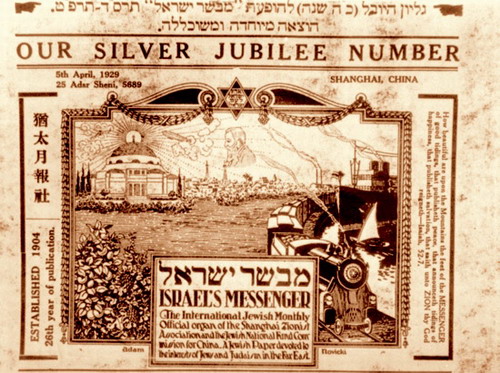
Mazal tov to Parnas Elliot Totah, Vice President Bernard Suissa, and all of our members (including VP Gwen Zuares) and friends at Magen David Sephardic Congregation on their 25th Building Anniversary Gala and the Installation of Rabbi Col. Ari Soussan, PhD as spiritual leader at the Sephardi Synagogue of the Nation’s Capitol.
Click here to dedicate a future issue in honor or memory of a loved one

Upcoming Events ◊ ASF Sephardi Shop ◊ Donate ◊ Sephardi World Weekly ◊ ASF IJE ◊ ASF Sephardi House ◊ Archive ◊ Read Online
The American Sephardi Federation’s Sephardi Ideas Monthly (SIM) by Dr. Aryeh Tepper is a continuing series of essays and interviews from the rich, multi-dimensional world of Sephardi thought and culture that is delivered to your inbox every month.
Imagine a way of life characterized by passionate love and deep knowledge of the Jewish tradition, fiery commitment to the revival of the Jewish people in the Land of Israel, and keen cosmopolitan receptivity. A noble path that alternates between the active and contemplative modes and manifests itself in English language prose, Hebrew language poetry, and Arabic language fundraising appeals. Meet the Renaissance Man of Sephardi Jerusalem, Rabbi Dr. Ariel Bension (1880-1932), a cultural-political dynamo who dedicated his talents to advancing the Zionist project and turned to the free-spirited Sephardi mystics of the Zohar for articulating a vision of Zionist identity.
Bension is almost completely unknown among literate Jews today. When he is mentioned in the occasional academic article, a single aspect of his exceedingly rich biography and personality is usually featured. For students of Sufism, Bension is “the Sephardic Rabbi in Jerusalem and Manastir who admired Ibn Arabi”; for scholars of Hebrew literature, Bension is the Zionist writer who strove “to create a new Hebrew form that… arises from within the life of Mizrahi tradition”; for historians of Zionist history Bension was the “representative of the United Israel Appeal (Keren hayesod)” who “stood out” as a “charismatic speaker [and] preacher” travelling the world to win souls for Zionism “based on a symbolic and actual return to the East”; while for scholars of Jewish mysticism he is the author of a book that, since the rise of the academic study of Kabbalah, has fallen into oblivion, The Zohar in Muslim and Christian Spain (1932).
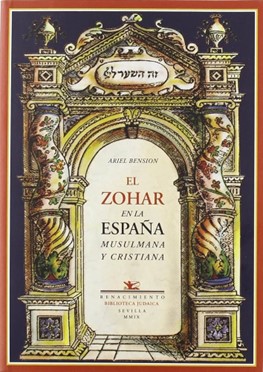
Setting the academic horizon aside, Bension’s book asks a good question: how much of the Zohar’s vitality reflects the “spirit of fantastic adventurousness with which all currents of Spanish life were impregnated,” a spirit of fantastic adventurousness that, according to Bension, the Zohar’s authors shared with Spanish Christians and Muslims like Ramon Lulle, Santa Teresa, Ibn Arabi, and Ibn Tufail. To be clear, Bension believed that the Zohar’s ideas are ancient but Spanish Jews, not a Talmudic sage, composed the 13th c. text. However, from his perspective, the Zohar’s sanctity is enhanced, not diminished, when we recognize the shared Spanish sensibility that animated the soul of Judaism’s mystical Midrash:
The mystics of the Peninsula were… distinguished by the intensity with which they probed to the heart of the mysteries… With courage and fearlessness they carried on their search for the Infinite in the most dangerous and difficult of ways… in proving that He exists in all things.
(The Zohar in Moslem and Christian Spain, p. 31)
The passage serves as a faithful portrait of Bension, the son a kabbalist from the famed Beit El Seminary in Jerusalem’s Old City who saw himself as a continuation of the Sephardi mystical tradition in modern, Zionist form: “Zionism has now come as of old, to save the lamp of Judaism from dying out.”
Bension’s “fearless search for the Infinite” was on display during his 1924 Farewell Address to the local notables and Jewish community of Shanghai. Beginning in 1922, Bension the Zionist emissary began visiting Baghdadi Jewish centres across the Middle and Far East. In “Mesopotamia” he met with King Faisal and raised extraordinary sums for Zionist projects while in Shanghai. In early 1924, he shared centre-stage at Eli Kadoorie’s Marble Hall with the Nobel-Prize winning poet of the East, Rabindranth Tagore. At the end of the same year, Silas Hardoon, the wealthy Baghdadi Jewish businessman who deeply assimilated into local Chinese manners, mores, and dress, hosted Bension for his going-away address. Bension used his final moment on centre stage in Shanghai’s International Settlement to offer an aspirational vision of Zionism that appealed to the highest impulses animating the diverse religions and cultures found in the “far and near” East and inviting Jews and non-Jews alike to support the revival of Jewish life in Land of Israel.

(Scan courtesy of Wikimedia)
Israel’s Messenger (IM), the English-language periodical published by Shanghai’s Baghdadi Jewish community, reported that guests were received in a specially decorated ballroom in mild roaring 20s mode, “no dancing was indulged in but there was enough esprit de corps prevailing to create an atmosphere of joy and hilarity.”
Bension began by thanking Mr. and Mrs. Hardoon “for the cordial reception” and noting the multi-cultural assembly:
I am happy to see people of Asia gathered here, believers of the Bible, Koran, Upanishad Vedas, Zend-Advesta, Tao Tein King [sic] who are creators of Eternal Values, believers that the form of Man is but one of the multifarious forms of life in this universe awaiting perfection, the culmination of creation, the happiness of the Creator and the creature.
After confidently calling upon the Creator and celebrating the multiplicity of creation, Bension explained to his audience that the Zionist project aimed “to give back to the Soul of Israel its dwelling place taken from her by force by enemies.” Lacking a national body, throughout exile Israel sustained herself through intense spiritual devotion that was her only conciliation
resulting in the literature of the Midrash, Talmud, Zohar, Kabbalah and the books of the saints. These spiritual gems are now awaiting the master who will enfold their pristine beauty and sanctity to the eyes of the world.
True to his Spanish mystical sensibilities, Bension’s imagination included cultural exchange with the Arab-Islamic world
We are all admirers of Arab culture, their language and literature, and the wonderful Koran… Respect fills my heart when I think of the Omayads in Damascus, the glory of the Abasads in Bagdad and the power of the Fatimists in Egypt…
And with the return of the Jews to Zion “the world will learn a new song… the principle of The One (Ehad).”
Bension concluded his address with a prayer
May the spirit of the prophets, the Koran, the Upanishad, the Vedas, the Zend Avesta, the Tao The King, dwell upon your work so that it will be the work of love and peace leading on to complete joy and harmony which is the aim of the Eternal One.
IM added that the speech was followed by “cheers.”
Ultimately, Bension dreamt of a “spiritual centre in Palestine [that] will be the meeting ground of the East and the West.” To that end, during his Farewell Address he announced the formation of a Committee for the Promotion of Jewish Culture in Palestine, of which he was proud to serve as Founder. A wildly successful fundraiser with extensive experience working in Zionist institutions, one is left to wonder if Bension might have pursued some version of his plan if not for passing away prematurely in 1932 at the age of 52. Bension’s boyhood learning partner and lifelong friend from Sephardi Jerusalem, the first Sephardi Chief Rabbi of the State of Israel, Rabbi Bension Meir Hai Uziel, shared in his eulogy that Bension, shortly before his passing, shared his desire to finally cease travelling and settle into the work of binyan, building the Land.
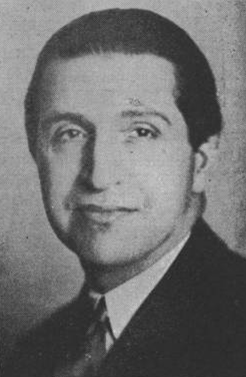
(Photo courtesy of the Encyclopedia of the Founders and Builders of Israel, vol. 4, page 1626)
IM’s editor, N.E.B. Ezra, was deeply sympathetic to Bension’s Sephardi mystical vision, and aside from regularly featuring Bension in the pages of IM, he concluded his comments to Bension’s Farewell Address by hoping “that Dr Bension’s message will be given the publicity it deserves.” Two months later it was republished in The Canadian Jewish Chronicle.
Even if Bension’s sentiments sometimes weigh heavier than his thought, R’ Dr. Ariel Bension’s Farewell Address to the community of Shanghai offered an aspirational vision of Jewish-Zionist identity that approached the world’s religions with the “courage and fearlessness” of the Spanish mystics from whom Bension was directly descended through his father and that received a new rooted-cosmopolitan-national-religious form in himself. The difficult path that he pursued, true to his reading of the Zohar, na’eh doresh and na’eh mikayem – “talking the talk and walking the walk”– was to seek out the Divine in all things.
Sephardi Ideas Monthly is happy to share with our readers R’ Dr. Ariel Bension’s 1924 Shanghai Farwell Address as covered in the pages of Israel’s Messenger. The print equivalent of a black-and-white news reel from the roaring 20s, it opens the gate to Jazz Age Baghdadi Jewish Shanghai. The slightly faded copy is clearly, although not always easily, legible. One hopes that a select collection of articles and essays from Israel’s Messenger will become digitally available in the future. Contact us if you are interested in supporting such a project. SIM will continue exploring Baghdadi Jewish Shanghai next month.
~~~~~~~

2008, Aluminum Cast
Sculpted by renowned Baghdad-born artist Oded Halahmy
The Wolf of Baghdad (Memoir of a lost homeland)
By Carol Isaacs
In the 1940s a third of Baghdad’s population was Jewish. Within a decade nearly all 150,000 had been expelled, killed or had escaped. This graphic memoir of a lost homeland is a wordless narrative by an author homesick for a home she has never visited.
Transported by the power of music to her ancestral home in the old Jewish quarter of Baghdad, the author encounters its ghost-like inhabitants who are revealed as long-gone family members. As she explores the city, journeying through their memories and her imagination, she at first sees successful integration, and cultural and social cohesion. Then the mood turns darker with the fading of this ancient community’s fortunes.
This beautiful wordless narrative is illuminated by the words and portraits of her family, a brief history of Baghdadi Jews and of the making of this work. Says Isaacs: ‘The Finns have a word, kaukokaipuu, which means a feeling of homesickness for a place you’ve never been to. I’ve been living in two places all my life; the England I was born in, and the lost world of my Iraqi-Jewish family’s roots.’
~~~~~~~
Upcoming Events or Opportunities
Our friends at Kanisse present:
Megillah Reading & Purim Party 2024
“Please join us for our first ever fully Sephardic/Mizrahi Megillah Reading and Purim Party! A stellar team of our community members will be reading Megillat Esther in the Syrian, Moroccan, and Iraqi traditions. The service will also be live-streamed for those joining us at a distance. Following the reading in the main sanctuary, we’ll continue the celebration in the reception hall with Persian delicacies, fine wines and Shushan-inspired vibes.
Costumes are optional but welcome!”
Saturday, 23 March
Megillah Reading at 9:00PM ET
Purim Party to follow at 10:00 PM ET
@Tribeca Synagogue
49 White Street (between Broadway & Church Street)
Sign-up Now!
Tickets: Free or $18-$101

~~~~~~~
Our friends at the Museum of Jewish Heritage and SHAI present:
Spring Equinox Festival: A Celebration of Persian Culture During Purim & Nowruz
“Join the Museum for a celebration of Persian heritage and culture during Purim and Nowruz. This day long festival will feature Persian music, food, and games. Museum admission will be free all day.”
Sunday, 24 March 10:00AM – 6:00PM ET
In-person @Edmond J. Safra Plaza
36 Battery Place, NYC
Sign-up Now!
Tickets: Free or $10 Suggested Donation

“This free day-long festival will feature Persian music, food, and games for families and kids. Highlights include: a performance by pianist and composer Tania Eshaghoff-Friedburg, a screening of one of shadow puppeteer Hamid Rahmanian’s films, and the launch of the new podcast The Nightingale of Iran hosted by Danielle and Galeet Dardashti. In addition, the US Backgammon Federation will be teaching backgammon and running a backgammon tournament. Make sure to have some tea at a Persian tea house set up in the Museum’s Events Hall and take a photo with a beautiful haft-sin in the lobby!”
Co-Presenters: Pardis for Children, USBGF, Be’Chol Lashon, the Sephardic Jewish Brotherhood of America, and the American Sephardi Federation
~~~~~~~
Our friends at Qesher present:
The Jews of Yemen and a Journey on the Magic Carpet
“The Jewish community of Yemen has existed since antiquity, but today comprises just a handful of affiliated members. The past century saw the largest waves of immigration to Israel, among which my grandmother took part. Through conversations with her, I learned both of her personal ordeal as a child thrust into the unknown, as well as the changing way of life for Yemenites in Israel. They and their descendants have made their mark in Israeli society and have contributed much to religious study, music, crafts and, of course, food.”
Thursday, 28 March at 3:00PM ET
Sign-up Now!
Tickets: $9-$18

~~~~~~~
The American Sephardi Federation and Jewish Lives at Yale University Press present:
Why Spinoza Matters Now: Truth and Freedom in America Today
Join us for a lively and timely discussion celebrating the launch of Ian Buruma’s new book, Spinoza: Freedom’s Messiah. Buruma will be joined on the panel by Steven Nadler, Rebecca Newberger Goldstein, & Clémence Boulouque
Sunday, 31 March at 3:00PM ET
In-Person @ the ASF – Center for Jewish History
Sign-up Now!
Tickets: $15-$500

350 years after his death, the philosophy of Baruch Spinoza remains vitally relevant — especially in this period of deep political division and with the threat to liberal democracy not only in Europe and elsewhere, but right here at home. Spinoza was the most open and important proponent of democracy, toleration, politics free from religious sectarian interference, and freedom of expression in the early modern period. He was also “cancelled” (Herem) by Amsterdam’s Jewish community.
See this New Yorker review, “Baruch Spinoza and the Art of Thinking in Dangerous Times,” as well as Buruma’s latest, “The 17th-Century Heretic We Could Really Use Now,” in The New York Times
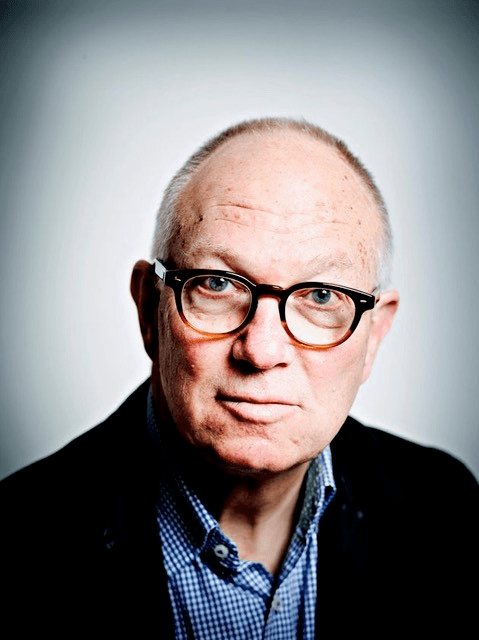
Bard College Professor Ian Buruma, author of Spinoza: Freedom’s Messiah (Jewish Lives – Yale University Press)
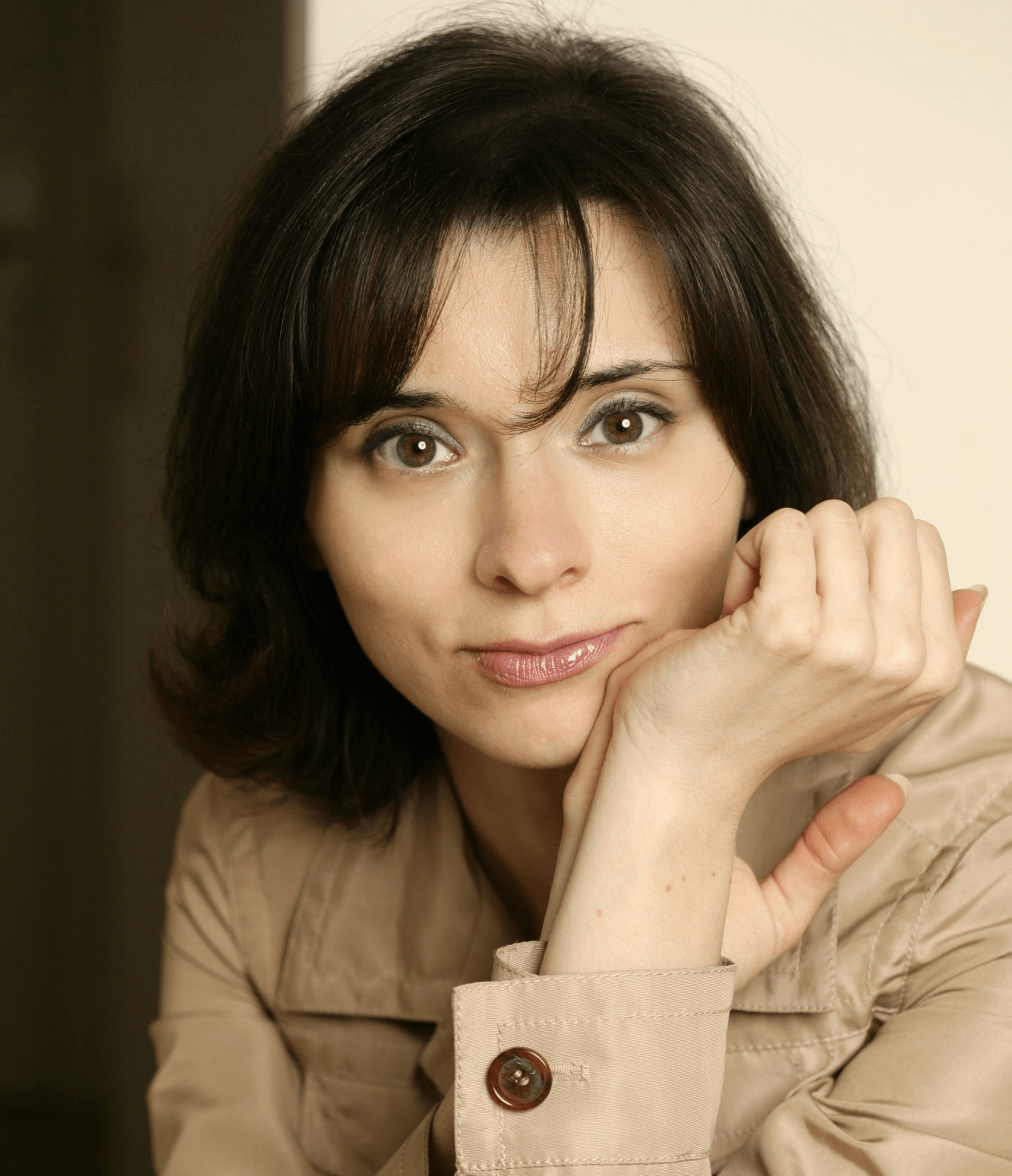
Moderator, Columbia University Professor Clémence Boulouque, author of Another Modernity: Elia Benamozegh’s Jewish Universalism (Stanford University Press)
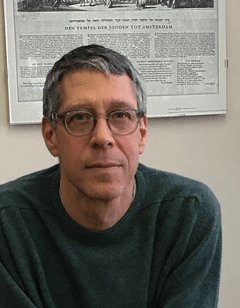
University of Wisconsin-Madison Professor Steven Nadler, author of Spinoza: A Life (Cambridge University Press) and Menasseh ben Israel: Rabbi of Amsterdam (Jewish Lives – Yale University Press)

Dr. Rebecca Newberger Goldstein, author of Betraying Spinoza: The Renegade Jew Who Gave Us Modernity (Jewish Encounters Series)
~~~~~~~
Instituto Cervantes New York, in partnership with the American Sephardi Federation and Centro Sefarad-Israel presents:
“The Golden Age of the Jews of Alandalus”
Lecture
Join us in a fascinating conversation about the golden age of the Jews of Alandalus during the Middle Ages.
The names of thinkers like Maimonides still resonate in the collective imagination, as well as being very relevant figures in the contemporary Jewish world. This exemplifies the huge influence of the Sephardic community around the world and the origins of this influence in Alandalus.
Raquel Benatar, Vice President of the American Sephardi Federation, and Jaime Moreno Bau, Director of Centro Sefarad Israel, will explore why the Jewish community of Alandalus was one of the most prosperous of all those that inhabited the Iberian Peninsula during the Middle Ages and how this cultural splendor was always linked to the economic bonanza derived from the Mediterranean commercial networks.
The exhibition “The Golden Age of the Jews of Alandalus” will be inaugurated on April 11th at the American Sephardi Federation.
Wednesday, 10 April at 6:30PM ET
In-Person @ Instituto Cervantes de Nueva York
211 East 49th St, NYC
Complimentary RSVP@
cultny1@cervantes.es

~~~~~~~
The American Sephardi Federation, Centro Sefarad-Israel and the Embassy of Spain present:
Exhibit Inauguration: “The Golden Age of the Jews of Alandalus” | “La Edad de Oro de los judíos de Alandalús”
Join us to celebrate the Jewish community of Alandalús with our special guests:
Ángeles Moreno Bau, Ambassador of Spain to the United States
Jaime Moreno Bau, General Director of the Centro Sefarad-Israel
David Dangor, President of the ASF
Dr. Vanessa Paloma Duncan-Elbaz, ASF Broome & Allen Fellow, Research Associate at Cambridge University, and award-winning scholar and singer
Matt Gatton, Sephardic Scholar and author of “The Shadows of Socrates”
Dr. Hélene Jawhara Piñer, ASF Broome & Allen Scholar, award-winning author of “Sephardi: cooking the history” & “Jews, Food, and Spain: The Oldest Medieval Spanish Cookbook and the Sephardic Culinary Heritage”
Rabbi Yamin Levy, Founder of the Maimonides Heritage Center and author of “The Founding Fathers of Sephardic Jewry” and “The Mysticism of Andalusia”
Dvir Avnon-Klein, ASF Sephardi House Fellow and talented multi-instrumentalist
Thursday, 11 April at 6:30PM ET
Program will be followed by a reception
In-Person @ the ASF – Center for Jewish History
Sign-up Now!
Tickets: $26

The exhibition has been organized by Centro Sefarad-Israel, with the collaboration of Casa del Mediterráneo, the Miller Center for Contemporary Judaic Studies, and The George Feldenkers Program in Judaic Studies of the University of Miami, the Red de Juderías de España, the World Jewish Congress, Fundación Hispano Judía, and the American Sephardi Federation.
It also has the support of Spain’s Ministry of Foreign Affairs – European Union and Cooperation, the Community of Madrid, the Madrid City Council, ElAl, Instituto Cervantes, the University of Cambridge, the University of Granada, Trinity College Dublin, and the European Research Council.
~~~~~~~
The American Sephardi Federation presents:
Socrates, Moses, and the Long Fight Against Idolatry
Join us for a fascinating discussion celebrating the launch of Matt Gatton’s new book, The Shadows of Socrates: The Heresy, War, and Treachery Behind the Trial of Socrates.
Sunday, 14 April at 4:00PM ET
In-Person @ the ASF – Center for Jewish History
Sign-up Now!
Tickets: $15-$500

The trial of the ancient Greek philosopher Socrates is widely considered the most famous trial of all time. At age 70, he was charged with impiety (a religious crime) and corrupting the youth, but the reasons for these charges were left unexplained, as the prosecution’s case was not recorded. There’s a reason for this: Socrates triggered the first great battle between philosophy and religion when he launched a searing critique of Athens’ most important and secretive idolatrous cult. Socrates has more in common with Moses, Maimonides, and Spinoza than you might ever have imagined. Sometimes the light of true reason must fight in the shadows.
~~~~~~~
The American Sephardi Federation presents:
Convergence: Arabic, Hebrew, and Persian Calligraphy in Conversation
Featuring the multilingual art of Ruben Shimonov Convergence creates a visual world where Hebrew, Arabic, and Persian languages interact with, and speak to, one another; a world where stylized letters and words dance together on the page; a world where cultures, religions, communities, and philosophies intersect.
Juxtaposing cognates from these ancient West Asian languages, artist Ruben Shimonov encourages the viewer to explore the deep-rooted connections between these tongues, as well as the multilayered and transnational identity of the artist himself.
On View in the Leon Levy Gallery
through 31 May 2024
@ the Center for Jewish History

~~~~~~~
The American Sephardi Federation and Mimouna Association’s Rebuilding Our Homes Project present:
Re-Creation: Judaica by Moroccan Muslim Artisans
Explore the exhibition of Judeo-Moroccan art, Moroccan Judaica, cultural and religious objects, including Menorot, Mezuzot, Yads, Shabbat Candleholders, Seder Plates, Hallah Covers, and much more.
On View through 31 May 2024
@ the Center for Jewish History

As Moroccan Jewish populations largely left the mellahs (Jewish quarters) in the latter half of the 20th century, there was a danger that not only designs but even the traditional artisanal techniques needed to create them would be lost. Passed down from one artisan to another and perfected over time, these designs and techniques. ranging from vibrant patterns to intricate metalwork and soulful wood carvings, are expressions of Moroccanity and reflect the individual character of each city. The materials and craftsmanship of Rabat are different than Fez, and Essaouira is distinct from both.
Mimouna Association and the American Sephardi Federation’s Rebuilding Our Homes Project, a multi-year USAID-supported New Partnerships Initiative, brought three notable experts-Ms. Zhor Rehihil, Ms. Deborah Koenigsberger Gutierrez, and Ms. Meryem Ghandi to train Moroccan Muslim artisans in the history of Judeo-Moroccan art and guided them in re-creating Moroccan Judaica, which encompasses a diverse array of cultural and religious objects, including Menorot, Mezuzot, Yads, Shabbat Candleholders, Seder Plates, Hallah Covers, and much more.
~~~~~~~
The American Sephardi Federation presents:
“The Golden Age of the Jews of Alandalus” | “La Edad de Oro de los judíos de Alandalús”
On View in the Paul S. And Sylvia Steinberg Great Hall
through 14 June 2024
@ the Center for Jewish History

The Jewish community of Alandalús gave the world extraordinary thinkers like Maimonides, diplomats like Ibn Shaprut, and poets like Ibn Gabirol and Judah Halevi, whose wisdom, works, and accomplishments resonate through the ages. 820 years after his death, the RAMBAM’s contributions to medicine, philosophy, diplomacy, and Jewish law continue to inspire wonder and influence till today. Across the Mediterranean in Fustat (Cairo) about two hundred thousand documents accumulated in the Ben Ezra Synagogue’s Genizah—a room or grave where obsolete sacred documents are respectfully discarded—over the course of nearly a millennium.
The geographical location of Egypt, a natural bridge between the Islamic East and Christian West, made it possible for many of these documents to be of Andalusian origin. This exhibition, curated by the University of Granada Professor José Martínez Delgado, takes us on a journey from the origins of this important community to its exodus and extinction in the XIX century. Although subsequently scattered all over the world, Sepharadim have maintained connections to their past by perpetuating traditions, the Ladino (Judeo-Spanish) language, and exemplifying a seriously Jewish yet cosmopolitan worldview.